#book of witchcraft
Text
The Drummer of Tedworth
The story of the Drummer of Tedworth has often been called the first poltergeist in England that has been reported on in writing and the mystery surrounding it stands to this day.
The story of the Drummer of Tedworth has often been called the first poltergeist in England that has been reported on in writing and the mystery surrounding it stands to this day.
In March 1661 a man named John Mompesson sued a drummer called William Drury whom he meant made money under false pretenses. Drury was a traveling showman, drumming, juggling, dancing and other forms of “hocus pocus”…

View On WordPress
#1600s#1660s#book of witchcraft#cursed#drum#england#Europe#featured#haunted object#poltergeist#UK#witchcraft
0 notes
Text
Herb's Properties
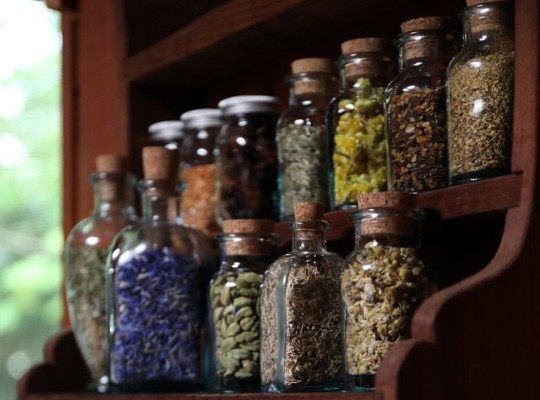
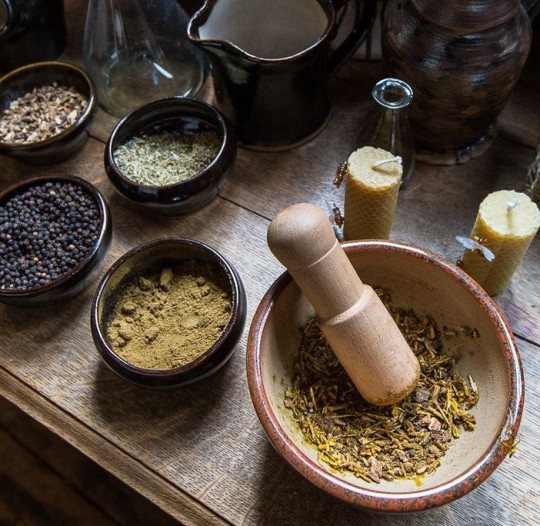
Basil: money, luck, prosperity, happiness
Bay Leaf: energy, cleansing, can be charged with almost any intention
Camomile: Caring, kindness, luck, growth, self-love growth, confidence, avoiding negativity, happiness
Cinnamon: passion, quick success, fire magick
Chia seeds: Growth, health, kindness, Property
Chilli flakes: Pride, confidence, power, strength, Passion
Cumin: Courage, bravery, protection, loyalty
Dandelion: wishes, charisma, success, good luck
Dill: sexual love, luck, protection
Eucalyptus: cleansing, healing, purifying, relaxing, comfort
Fennel: hate, anger
Flax seeds: Prosperity, growth, new beginnings
Ginger: fiery passion, success, and personal power
Jasmine: love, dreams, sensuality, luxury and kindness
Lavender: love and attraction, purification, relaxation, restful sleep
Nutmeg: luck, Health, Fidelity, Love, Prosperity, comfort, loyalty
Oregano: comfort, love, warmth
Paprika: Pride, confidence, power, strength
Parsley: Cleansing. purification
Peppermint: healing, purification, love and energy, cleansing, prosperity
Poppy seeds: protection, intuition, self-assurance, hexing and cursing
Rose: love, beauty, harmony, romance, attraction
Rosemary: cleansing, purification, wisdom, protection
Sesame seeds: Prosperity, growth, health, nurturing
Spearmint: love, cleansing, renewal, blessing
Sunflower seeds: happiness, growth, joy
Thyme: beauty, strength, courage
Turmeric: confidence, creativity, energy
Vanilla: love and sexuality
tip jar
#thecupidwitch#witchcraft#witch community#witches#witchcore#witch#witchblr#green witch#grimoire#herbs#book of shadows#wicca#pegan#peganism#wiccablr#pagan wicca#wiccan#magic#ko fi support#baby witch#beginner witch#chaos witch#eclectic witch#folk witchcraft#hedge witch#kitchen witch#tarot witch#traditional witchcraft#witch aesthetic#plants and herbs
4K notes
·
View notes
Text
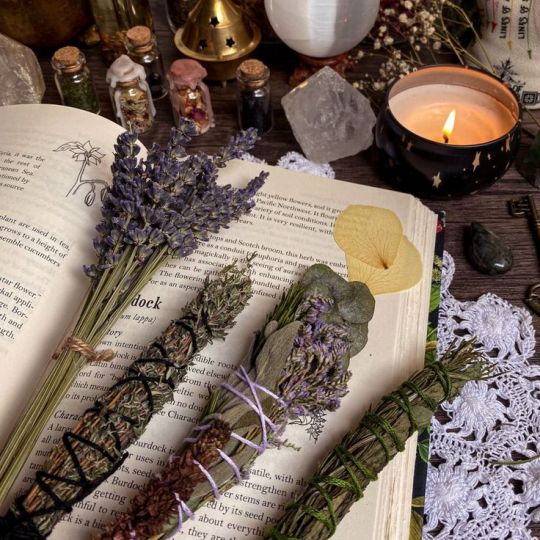



She doesn't have a religion.
Her faith
resides in
the stars, flowers, ocean, and herself.
#witchcore#witchcraft#witch#moon#full moon#words#quotes#books#book quotes#aesthetic#light academia#goth#gothic#flowercore#naturecore#cottagecore#photography#books and libraries#wicca
3K notes
·
View notes
Text



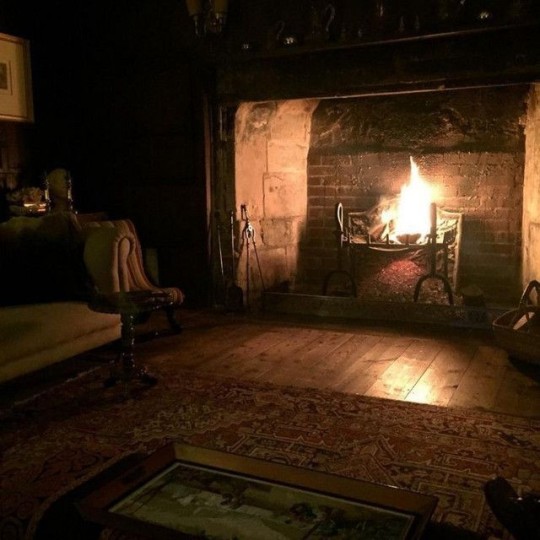
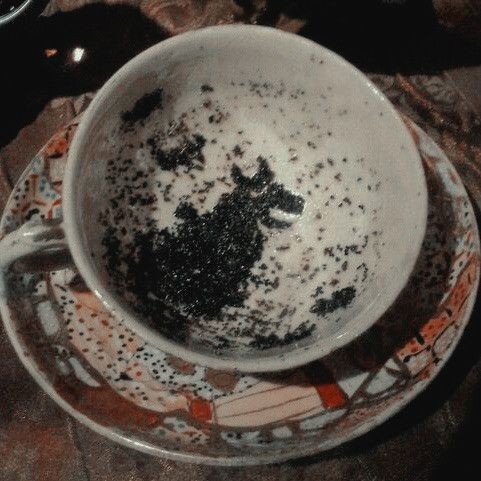
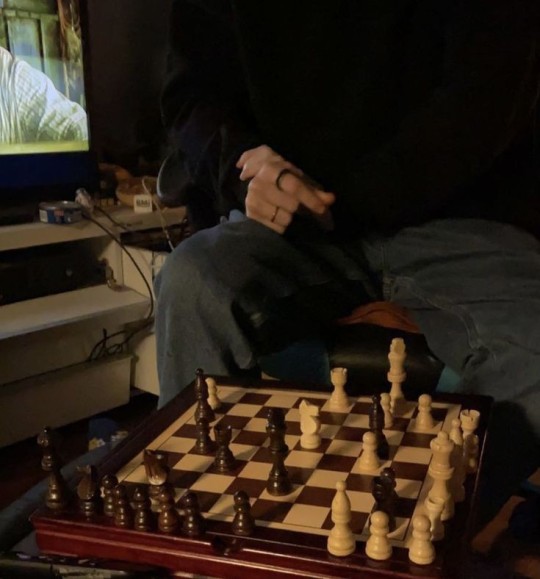



the history of magic
#aesthetic#dark academia#coffee#academia#college#light academia#studyblr#literature#art#books#Magic#hogwarts school of witchcraft and wizardry#Wizardry#Witch#harry potter fandom#harry potter
5K notes
·
View notes
Text
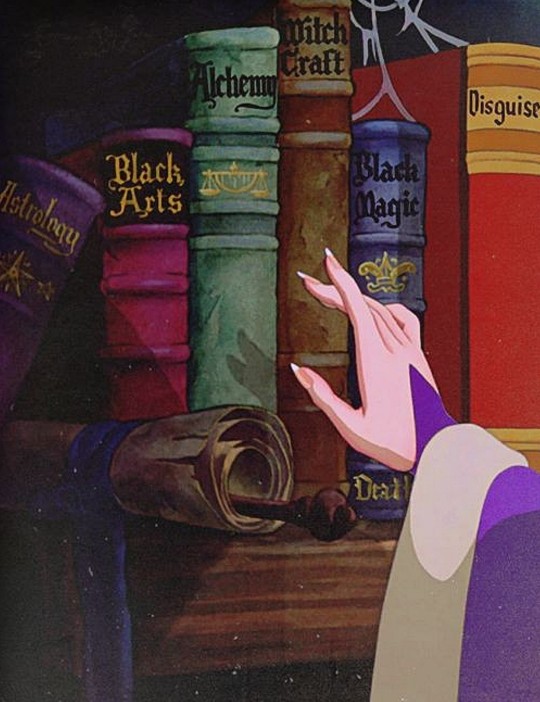
#witch#Alchemy#books#astrology#witchcraft#black magic#disguise#comics#comic#cartoon#cartoons#witches
4K notes
·
View notes
Text
Homemaking, gardening, and self-sufficiency resources that won't radicalize you into a hate group

It seems like self-sufficiency and homemaking skills are blowing up right now. With the COVID-19 pandemic and the current economic crisis, a lot of folks, especially young people, are looking to develop skills that will help them be a little bit less dependent on our consumerist economy. And I think that's generally a good thing. I think more of us should know how to cook a meal from scratch, grow our own vegetables, and mend our own clothes. Those are good skills to have.
Unfortunately, these "self-sufficiency" skills are often used as a recruiting tactic by white supremacists, TERFs, and other hate groups. They become a way to reconnect to or relive the "good old days," a romanticized (false) past before modern society and civil rights. And for a lot of people, these skills are inseparably connected to their politics and may even be used as a tool to indoctrinate new people.
In the spirit of building safe communities, here's a complete list of the safe resources I've found for learning homemaking, gardening, and related skills. Safe for me means queer- and trans-friendly, inclusive of different races and cultures, does not contain Christian preaching, and does not contain white supremacist or TERF dog whistles.
Homemaking/Housekeeping/Caring for your home:
Making It by Kelly Coyne and Erik Knutzen [book] (The big crunchy household DIY book; includes every level of self-sufficiency from making your own toothpaste and laundry soap to setting up raised beds to butchering a chicken. Authors are explicitly left-leaning.)
Safe and Sound: A Renter-Friendly Guide to Home Repair by Mercury Stardust [book] (A guide to simple home repair tasks, written with rentals in mind; very compassionate and accessible language.)
How To Keep House While Drowning by KC Davis [book] (The book about cleaning and housework for people who get overwhelmed by cleaning and housework, based on the premise that messiness is not a moral failing; disability and neurodivergence friendly; genuinely changed how I approach cleaning tasks.)
Gardening
Rebel Gardening by Alessandro Vitale [book] (Really great introduction to urban gardening; explicitly discusses renter-friendly garden designs in small spaces; lots of DIY solutions using recycled materials; note that the author lives in England, so check if plants are invasive in your area before putting them in the ground.)
Country/Rural Living:
Woodsqueer by Gretchen Legler [book] (Memoir of a lesbian who lives and works on a rural farm in Maine with her wife; does a good job of showing what it's like to be queer in a rural space; CW for mentions of domestic violence, infidelity/cheating, and internalized homophobia)
"Debunking the Off-Grid Fantasy" by Maggie Mae Fish [video essay] (Deconstructs the off-grid lifestyle and the myth of self-reliance)
Sewing/Mending:
Annika Victoria [YouTube channel] (No longer active, but their videos are still a great resource for anyone learning to sew; check out the beginner project playlist to start. This is where I learned a lot of what I know about sewing.)
Make, Sew, and Mend by Bernadette Banner [book] (A very thorough written introduction to hand-sewing, written by a clothing historian; lots of fun garment history facts; explicitly inclusive of BIPOC, queer, and trans sewists.)
Sustainability/Land Stewardship
Braiding Sweetgrass by Robin Wall Kimmerer [book] (Most of you have probably already read this one or had it recommended to you, but it really is that good; excellent example of how traditional animist beliefs -- in this case, indigenous American beliefs -- can exist in healthy symbiosis with science; more philosophy than how-to, but a great foundational resource.)
Wild Witchcraft by Rebecca Beyer [book] (This one is for my fellow witches; one of my favorite witchcraft books, and an excellent example of a place-based practice deeply rooted in the land.)
Avoiding the "Crunchy to Alt Right Pipeline"
Note: the "crunchy to alt-right pipeline" is a term used to describe how white supremacists and other far right groups use "crunchy" spaces (i.e., spaces dedicated to farming, homemaking, alternative medicine, simple living/slow living, etc.) to recruit and indoctrinate people into their movements. Knowing how this recruitment works can help you recognize it when you do encounter it and avoid being influenced by it.
"The Crunchy-to-Alt-Right Pipeline" by Kathleen Belew [magazine article] (Good, short introduction to this issue and its history.)
Sisters in Hate by Seyward Darby (I feel like I need to give a content warning: this book contains explicit descriptions of racism, white supremacy, and Neo Nazis, and it's a very difficult read, but it really is a great, in-depth breakdown of the role women play in the alt-right; also explicitly addresses the crunchy to alt-right pipeline.)
These are just the resources I've personally found helpful, so if anyone else has any they want to add, please, please do!
#homemaking#homemaking resources#gardening#urban gardening#self sufficiency#self sufficient living#sustainability#sustainable living#homesteading#nontrad homemaker#nontrad housewife#urban homesteading#solarpunk#cottagecore#kitchen witch#kitchen witchcraft#crunchy to alt right pipeline#book rec#book recommendations#resource#long post#mine#racism tw#racism mention#transphobia tw#transphobia mention
1K notes
·
View notes
Text
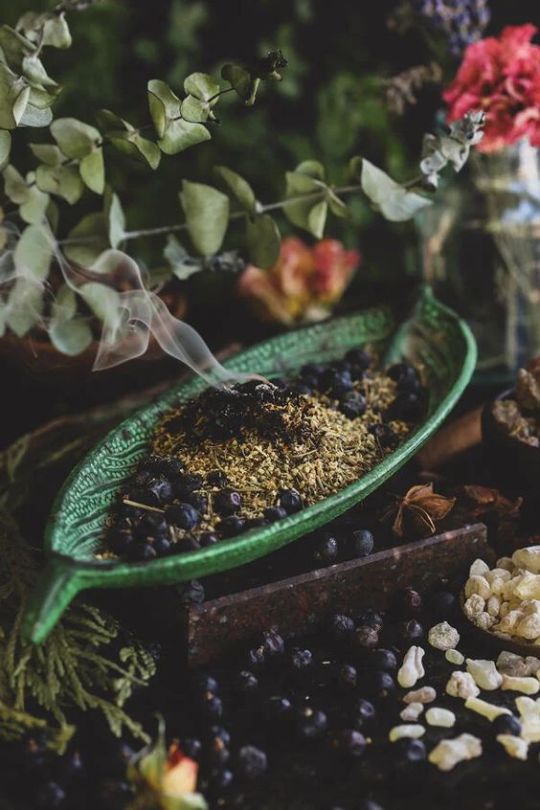
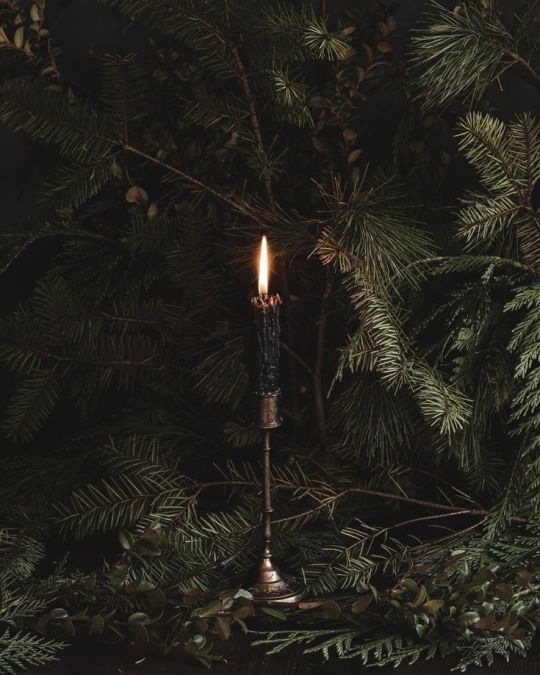
Witchcraft 101:
Cleansing vs Uncrossing vs Banishing

Alright witches. Lets dive into some witchy basics and discuss the differences between cleansing, uncrossing and banishing. This will hopefully help you differentiate between them.
But.. lets be honestly if you do something like call a spell an uncrossing when "technically" doing a banishing, who cares its all in good spirit. The reason i think its good to have a difference in mind between these falls into how you handle a spell. If I'm doing an uncrossing vs a banishing i would choose different spell ingredients, maybe work with different gods, or choose a different element to work with.
Cleansing: I consider cleansings as the foundation and most basic of these. Its almost an umbrella term the other two fall under. All banishings are cleansings, but not all cleansings are a banishing. Cleansings are when you're trying clear something away. Most often people will use this term in day to day workings and general upkeep to make sure nothing has stuck to them. This would include more casual things like smoke cleansing, showering and asking the water to cleanse you, sound cleansing, etc. Its not a full spellworking or ritual, but still done with energy and intention. Sometimes you may do a cleansing and realize whatever is there, is stuck deeper then you expected. So you take the next steps and do a more "intense" cleansing like an uncrossing or banishing.
Uncrossing Spells: Uncrossing specifically refers to removing unwanted energy. Usually when discussing what is an uncrossing, I sperate it from just a cleansing by describing it as a very intense cleansing where you're trying to strip away intense and specific energy. These are more work and a step up from an everyday cleansing for more intense scenarios. This is very spirit focused; think of it as taking out the bad and putting in the good. Some types of spells I would consider an uncrossing are: removing hexes/jinx/curses, removing the evil eye, spiritual detoxes, road openers, removing any stubborn energy, removing feelings, etc. I associate uncrossings with water: it's soaking in and getting that energy out. I would choose herbs/spell ingredients that are uplifting and purifying. Think salt, rosemary, rue, and lemons.
Banishing Spells: Banishing spells remove unwanted entities, spirits or people. You can use it to get rid of very deep rooted things like habits or insecurities. Banishings are quite a strong forms of spellwork. You're really kicking something out and away from you when you do a banishing. Its connected to more deep rooted things that you're trying to remove from your life. Some types of spells I could consider a banishing: cord cutting, exorcisms, banishing a spirit attached to you, getting rid of insecurities, freezers, etc. I associate banishings with fire. Burn and gtfo. I would choose herbs that have more of a kick to them and are defensive. Think nettle, blackberry leaves, cloves, even pepper in some cases.
Please note this doesn't have to be something strict. Like i said at the beginning this is just a guide that will help you differentiate so you can tackle the spellwork as effectively as possible.
✨Stay Spooky ✨
#witchblr#pagan witch#witchcraft#witchythings#witch#the spectral cottage#spellwork#witch tips#Banishing#Cleansing#Uncrossing#Spell Tips#grimoire#book of shadows#witchy how to#baby witch#beginner friendly
2K notes
·
View notes
Text
15 Grimoire Page Ideas That Aren't Basic
Chronomancy Correspondences:
Explore the connection between time and magic, including auspicious moments for spellcasting, planetary hours, and lunar phases.
Echoes of Enchantment:
Discuss the use of echoes and resonance in magical workings, tapping into the vibrational frequencies of words, symbols, and intentions.
Liminal Spaces Invocation:
Explore the magical potency of liminal spaces—thresholds, crossroads, and in-between places—and how to invoke their energies.
Numinous Nectar Elixirs:
Detail the creation of magical elixirs using rare and ethereal substances, discussing their uses in rituals and ceremonies.
Quantum Sigilcraft:
Delve into the intersection of quantum physics and sigil magic, exploring the idea that consciousness can influence reality at a fundamental level.
Astral Alphabets:
Introduce lesser-known alphabets or symbolic systems used in astral travel and communication with otherworldly entities.
Dreamweaving Spells:
Discuss the art of crafting spells that are specifically designed to be cast within the dream realm, influencing waking reality.
Candle Color Alchemy:
Explore the magical properties of less common candle colors and their associations with specific intentions, emotions, and energies.
Chthonic Charms:
Focus on charms and talismans specifically attuned to underworld energies and deities, connecting with the mysteries of the subterranean realms.
Technomancy Scripts:
Examine the use of coding languages, digital symbols, and technology-based sigils in modern magical practice.
Quantum Familiars:
Explore the idea of spirit companions that exist beyond the constraints of time and space, bridging the gap between the metaphysical and quantum realms.
Sacred Geometry of Sound:
Investigate the use of sound frequencies and sacred geometry in combination, exploring how they can enhance magical rituals and spellcasting.
Ephemeral Elementals:
Discuss the existence and interaction with elementals that are tied to fleeting or ephemeral elements, such as mist, shadows, or reflections.
Psychotronic Crystals:
Explore the use of crystals not only for their physical properties but also for their alleged ability to interact with psychic and spiritual energies.
Aetheric Anatomy Cleansing:
Detail practices for cleansing and balancing the aetheric body, exploring lesser-known energy centers and channels.

#Witchcraft#Grimoire#Book of Shadows#Spellcraft#Rituals#Magick#Paganism#Occult#Witchy Aesthetics#Wicca#Mystic Arts#Esoteric Knowledge#Alchemy#Crystal Magick#Herbalism#Divination#Tarot#Moon Phases#Ritual Tools#Witch's Brew#Candle Magic#Sigils#Enchantments#Mystical Symbols#Sacred Geometry#Spirituality#Spellwork#Potion Making#Spell Ingredients#Occultism
2K notes
·
View notes
Text
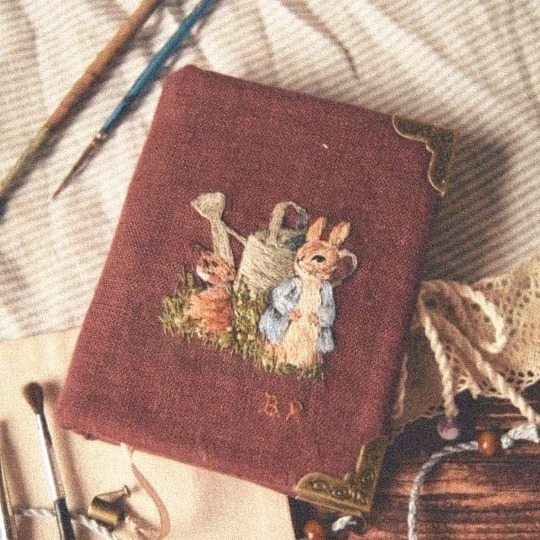
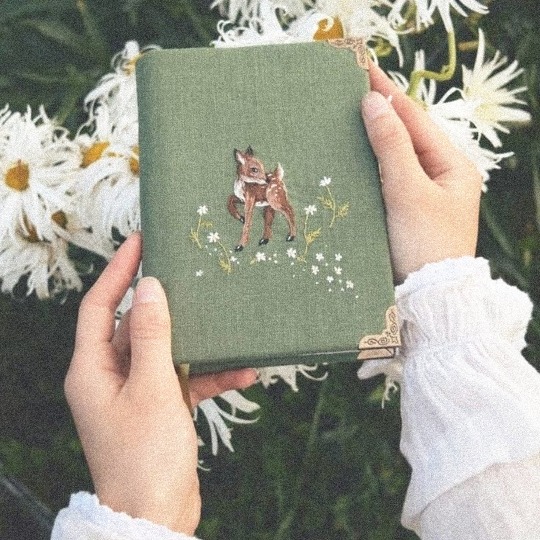

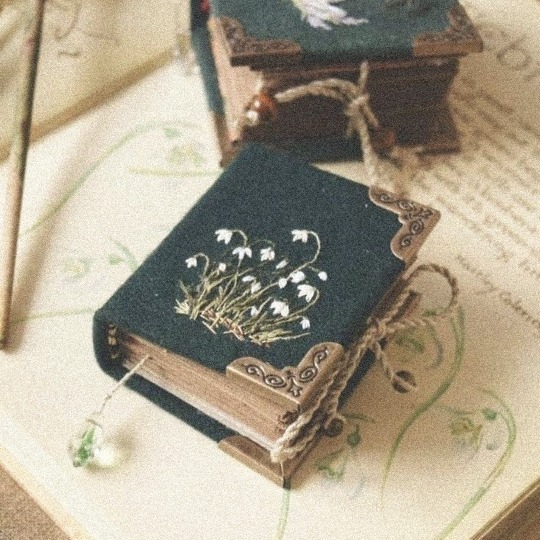




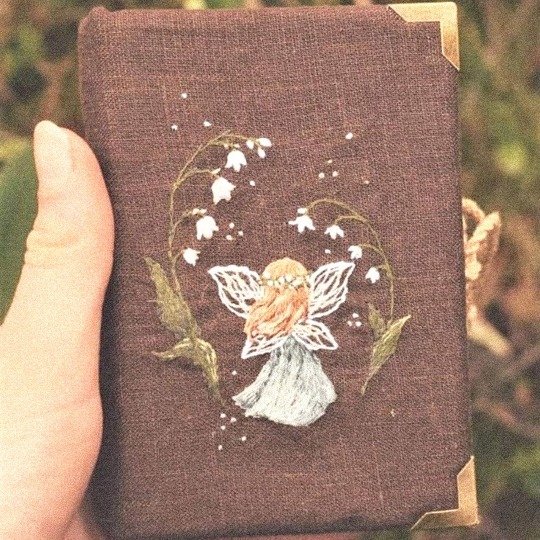
#moodboard#aesthetic#icons#indie#pinterest#cottagecore#cozy#naturecore#cottage aesthetic#autumn#witchy#witchcraft#books#booklr#artwork#art#crafts#craftblr#academia moodboard#academia aesthetic#academia style#academia#dark gothic#dark academia#light academia aesthetic#light academia#goblincore#green goblin#goblin girl#forest aesthetic
3K notes
·
View notes
Text
The Ultimate Grimoire Guide
So! I have been seeing a ton of grimoire ideas and thought I’d stuff them all together. A lot of ideas are from @manifestationsofasort, @banebite, and @pigeonflavouredcake. Check them out! They have a ton of cool stuff there.
What Do I Use For My Grimoire?
You can use anything for a grimoire! For a physical one, journals, binders, and notebooks are good. For digital ones, Notion, Tumblr, Docs, and even just your file folder are great.
Introduction
A Book Blessing
Table of Contents
About Me
Your Current Path
Your Personal Beliefs
Your Spiritual Journey
Superstitions
Past lives
Favorite Herbs/Crystals/Animals/Etc.
Natal Chart
Craft Name
How You Entered The Craft
Astrology Signs
Birthday Correspondences (birth tarot card, birth stone, etc.)
Goals
Safety
Fire Safety
What Not to Burn
Toxic Plants & Oils (to humans, plants, animals)
Crystals That Shouldn’t Be Put… (in sun, in water, etc.)
Things That Shouldn’t Be In Nature (glass, salt, etc.)
Potion Safety
How to Incorporate Blood in Spells
Smoke Safety
Wound Care
Biohazards
Core Concepts
Intention & How It Works
Directing Energy
Protection
Banishing
Cleansing
Binding
Charging
Shielding
Grounding
Centering
Visualization
Consecration/Blessing
Warding
Enchanting
Manifestation
Meditation
What Makes A Spell Work
Basic Spell Structure
What Not To Do In Spells
Disposing Spell Ingredients
Revitalizing Long Term Spells
How To Cast Spells
What To Put In Spells
Spell Mediums (jars, spoken, candle, sigils)
Spell Timing
Potion Bases
Differentiating Between Magick and Mundane
Common Terms
Common Symbols
Intuition
Elements
Basic Alchemy and Symbols
Ways To Break Spells
Laws and Philosophies
Correspondences
Herbs & Spices
Crystals & Rocks
Colors
Liquids & Drinks
Metals
Numbers
Tarot Cards
Elements
Trees & Woods
Flowers
Days
Months
Seasons
Moon Phases
Zodiacs
Planets
Incense
Teas
Essential Oils
Directions
Animals
Symbology
Bone Correspondences
Different Types of Water
Common Plants
Entities
Deities You Worship
Pantheons
Pantheons & Deities Closed to You
Common Offerings
Epithets
Mythos
Family
Worship vs Work
Prayers & Prayer Template
Altars
Deity Comms
Devotional Acts
Angels
Demons
Ancestors
Spirit Guides
Fae
Familiars
House, Animal, Plant, Etc. Spirits
Folklore Entities
Spirit Etiquette
Graveyard Etiquette
Boundaries
Communication Guide & Etiquette
Spirit Work Safety Guide
How Entities Appear To You
Circle Casting
Common Offerings
Altars
Servitors
Mythological Creatures (dragons, gorgons, etc.)
Utility Pages
Gazing Pages
Sigil Charging Station
Altar Pages
Intent Pages
Getaway Pages
Vision Boards
Dream Pages
Binding Page
Pendulum Board
Crystal Grid
Throwing Bones Page
Divination Pages
Mirror Gazing Page
Invocation Pages
Affirmation/Manifestation Pages
Spirit Board Page
Other Practices
Practices That Are Closed to You (Voodoo, Hoodoo, Santeria, Brujeria, Shamanism, Native Practices)
Wicca and Wiccan Paths
Satanism, Both Theistic and Non-Theistic
Deity Work
Religious Paths (Hellenism, Christianity, Kemeticism, etc.)
Animism
Types of Magic/Spells
Pop Culture Paganism/Magic
Tech Magic
Chaos Magic
Green Magic
Lunar Magic
Solar Magic
Sea Magic
Kitchen Magic
Ceremonial Magic
Hedge Magic
Death Magic
Gray Magic
Eclectic Magic
Elemental Magic
Fae Magic
Spirit Magic
Candle Magic
Crystal Magic
Herbalism
Glamours
Hexes
Jinxes
Curses
Weather Magic
Astral Magic
Shadow Work
Energy Work
Sigils
Art Magic
Knot Magic
Music Magic
Blood Magic
Bath Magic
Affirmations
Divination
Tarot Cards
Oracle Cards
Playing Cards
Card Spreads
Pendulum
Numerology
Scrying
Palmistry
Tasseography
Runes
Shufflemancy
Dice
Bibliomancy
Carromancy
Pyromancy
Psychic Abilities
Astrology
Auras
Lenormand
Sacred Geometry
Angel Numbers
Ornithomancy
Aeromancy
Aleuromancy
Axinomancy
Belomancy
Hydromancy
Lecanomancy
Necromancy
Oneiromancy
Onomancy
Oomancy
Phyllomancy
Psephomancy
Rhabdomancy
Xylomancy
Tools
Crystal grid
Candle grid
Charms
Talismans
Amulets
Taglocks
Wand
Broom
Athame
Boline
Cingulum
Stang
Bells
Drums
Staffs
Chalices
Cauldrons
Witches Ladder
Poppets
Holidays
Yule
Imbolc
Ostara
Beltane
Litha
Lammas
Mabon
Samhain
Esbats
Deity Specific Holidays
Religious Holidays (Christmas, Easter, Dionysia, etc.)
Celestial Events
Altars
Basics of Altars
Travel Altars
Deity Altars
Spirit Altars
Familiar Altars
Ancestor Altars
Self Altars
Working Altars
Self-Care
Burnout Prevention
Aromatherapy
Stress Management
Coping Mechanisms
Theories & History
Witchcraft history
Paganism
New Age Spirituality
Cultural Appropriation
Thelema
Conspiracy Theories
Cults
Satanic Panic
KJV
Witches in History
Cats in History
Transphobia in Witchcraft Circles
Queerness in Witchcraft Circles
Other
Recipes
How to Get Herbs
Foraging
Drying Herbs and Flowers
Chakras
Reiki
Witches Alphabet
Runic Alphabet
Guide to Gardening
Your Witch Tips
Resources
Other Tips
List of Spells
Cryptids and Their Lore
What is a Liminal Space?
#witch#witchblr#baby witch#witchcraft#witches#kitchen witch#witchcore#witch aesthetic#witchery#witches of tumblr#spoonie witch#beginner witch#witch community#moon witch#green witch#pagan witch#witchy#grimoire#bos#book of shadows#grimoire ideas#book of shadows ideas#bos ideas
5K notes
·
View notes
Text
Idk what to call this but ain’t it pretty?




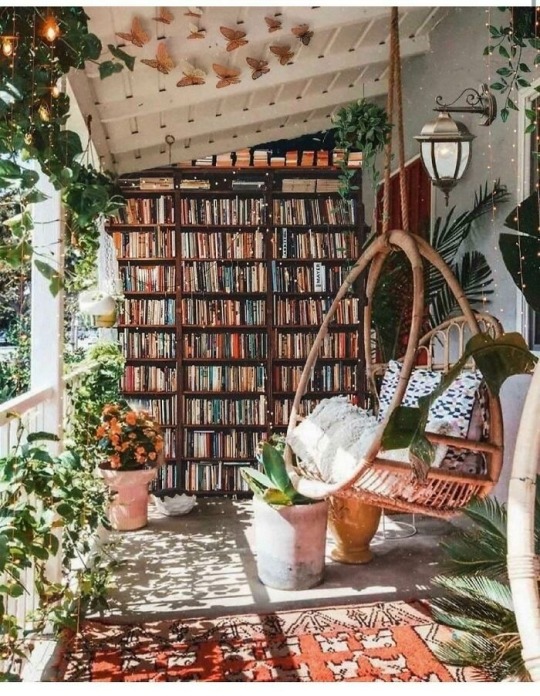

21K notes
·
View notes
Text
Different types of water and their magickal uses:

Sea water: good for curse/hex breaking, cleansing, healing, banishing and protection spells.
Dew water: beauty, love and fertility spells, as well as delicate magick. Also Good for Fae work.
Storm water: is great for spells and rituals that has to do with emotional strength, confidence, charge, motivation and force. It’s known for strengthening spells. Also good for curses.
Snow water: Spells and rituals that focus on purity, endings and change, as well as slow working spells.
River water: Good for creating changes, moving on and letting go of negativity, warding and focusing energy.
Rain water: Very multi-purpose, but specifically great for growth and rebirth spells. Great for spells that you want to keep gaining power over time.
Spring water: Growth, holy water, cleansing, protection, prosperity
Moon water: Depending on the moon phase it was created in, it can have different properties.
Sun Water: protection, healing, clairvoyance, courage, strength, prosperity, luck, self-love, cleansing and creativity.
Swamp Water: Used for banishing and binding.
tip-jar
#thecupidwitch#witchcraft#witch community#witchblr#witchcore#witch#witches#green witch#grimoire#spellwork#book of shadows#wiccablr#wicca#wiccan#pagan wicca#wiccalife#peganism#pegan#water#sea witch#water magic
1K notes
·
View notes
Text

#funny#lol#haha#humor#meme#memes#goth#gothic#spooky#halloween#witch#witchcore#witchblr#witchcraft#witch community#pagan#wicca#baby witch#words#quotes#books#book quotes
2K notes
·
View notes
Text
Ways to rejuvenate spiritual & physical energy levels
Here are some herbs, plants, teas, foods, and recipes that will help rejuvenate energy:
Ginseng: This is a traditional Chinese herb that has been used for centuries to increase energy levels, reduce stress and fatigue.
Matcha Tea: This tea is a form of green tea that is high in antioxidants and caffeine, which can help improve mental alertness and physical energy.
Maca Root: This herb has been traditionally used in Peru to enhance stamina, endurance and energy levels.
Ashwagandha: This adaptogenic herb is used in Ayurvedic medicine to reduce stress, anxiety, and fatigue.
Chia Seeds: These tiny seeds are packed with nutrients and can help provide a slow release of energy throughout the day.
Dark Chocolate: This treat is high in flavonoids which can help improve mental alertness and focus.
Spinach: This leafy green vegetable is high in iron, which is essential for maintaining energy levels.
Quinoa: This grain is rich in protein and complex carbohydrates, which can provide sustained energy.
Lemon & Ginger Tea: This tea is a great way to boost your immune system, reduce inflammation, and increase energy levels.
Berry Smoothie: Blend together a handful of mixed berries, a banana, a tablespoon of honey, and some almond milk for a delicious and energizing smoothie.
Avocado Toast: Mash half an avocado and spread it onto a slice of whole-grain bread for a healthy and energizing breakfast.
Grilled Chicken Salad: Toss together some grilled chicken, mixed greens, cherry tomatoes, cucumber, and a lemon vinaigrette for a light and energizing lunch.
Sweet Potato & Lentil Curry: This hearty and delicious dish is packed with nutrients and is a great source of sustained energy.
Baked Salmon: This fish is high in omega-3 fatty acids which can help improve mental focus and reduce fatigue.
Golden Milk: This warm and soothing drink is made with turmeric, ginger, honey, and coconut milk, and is believed to help reduce inflammation and increase energy levels.
#spiritual ways to increase energy levels#physical ways to increase energy#kitchen witch#kitchen witchcraft#witchblr#witchcore#witchcraft#witchlife#white witch#beginner witch#witch tips#grimoire#herb magick#green witch#spirituality#book of shadows
4K notes
·
View notes
Text

Very witchy vibes :)
Source: Instagram
#fairy core#fairytalecore#fairy aesthetic#fairycore#fairy#fae#witchcore#witchcraft#books#book covers#books and libraries#booklr#books & libraries#books and reading#bookblr#book aesthetic
1K notes
·
View notes
Text
Things to put in your book of shadows
Of course, only put in your book of shadows/grimoire what you want. If you don't want to put certain subjects in your book then that's fine. It's your book, utilize it how you want. This is just a masterlist of ideas that I've put together. Feel free to add anything else to the list that I may have missed, because there's absolutely no way I included everything.
And for the love of all the gods, if you come across a closed entity or practice, don't try to work with the entity or practice if you're not already part of that group or tradition. You can research it but don't practice it.
+ A blessing and/or protection
+ A table of contents
+ About you:
Your current path
Your personal beliefs
Your spiritual journey
Favorite crystals/herbs/animals
Natal chart
Craft name
How you got into the craft
Astrology signs
Birthday correspondences (birth tarot card, birth stone, etc)
Goals (if you have any)
Anything other relating to your personal practice
+ Safety
Fire safety
What NOT to burn
Plants and oils that can be toxic to your pets
What crystals shouldn't be in water, sunlight, etc
Things that shouldn't be put out in nature (salt, glass, etc)
Potion safety
How to incorporate blood safely
+ Core concepts:
Intention and how it works
Directing energy
Protection
Banishing
Cleansing
Charging
Shielding
Grounding and centering
Visualization
Consencration/Blessing
Warding
Enchanting
Manifestation
+ Correspondence
Personal correspondence
Crystals and rocks
Herbs and spices
Food and drink
Colors
Metals
Number
Tarot card
Elemental (fire, water, air, earth)
Trees and woods
Flowers
Days
Months
Moon phases
Zodiac
Planets
Incense
Teas
Essential oils
Directions (north, south, east, west)
Animals
Local plants, animals, etc
Dream symbology
+ Different practices
Practices that are closed to you (some examples below)
Voodoo and Hoodoo **Closed**
Santeria and Brujeria **Closed**
Shamanism and native american practices **Closed**
Wicca and wiccan paths
Satanism, both theistic and non-theistic paths
+ Different types/practices of magick
Pop culture magick
Technology magick
Chaos magick
Green witchcraft
Lunar magick
Sea witchcraft
Kitchen magick
Ceremonial magick
Hedge witchcraft
Death witchcraft
Grey witchcraft
Eclectic witchcraft
Norse witchcraft
Hellenic witchcraft
Animism
+ Deities
The deity/deities you worship
Different pantheons (the main five are Celtic, Roman, Greek, Egyptian and Norse, all open)
Deities and pantheons that are closed to you
Common offerings
Their epithets
Their mythology
Their family
Deity worship vs deity work
Prayers and how to make your own
Deity communication guide
Devotional acts
Ways to get closer to them
+ Other spiritual entities
Angels
Ancestor work
Spirit guides
The fae
Demons
Familiars
House spirits, animal spirits and plant spirits
Other various folklore entities
Spirit etiquette
Cemetery etiquette
Setting boundaries with the spirits
Communication guide and etiquette
Grounding, banishing, protection and cleansing, aka: "Spirit work safety guide"
How they appear to you
Common offerings
Circle casting
+ Divination
Tarot cards
Oracle cards
Tarot and oracle spreads
Pendulum
Numerology
Scrying
Palmistry/palm reading
Tasseography (Tea leaf reading)
Rune stones
Shufflemancy (Shuffling of a playlist)
Dice divination
Bibliomancy (Randomly picking a phrase from a book)
Carromancy (Melted wax)
Pyromancy (Reading flames)
Psychic abilities
Astrology
Aura reading
Divination via playing cards
Lenormand
Sacred geometry
Angel numbers
+ Other types of magick
Candle magick
Crystal magick
Herbalism/herbal magick
Glamour magick
Hexing
Jinxing
Cursing
Weather magick
Astral work
Shadow work
Energy work
Sigils
Art magick
Knot magick
Crystal grids
Color grids
Music magick
Charms, talismans and amulets
+ Spellwork
What makes a spell work
Basic spell structure
What NOT to do
Disposing of spell ingredients
Revitalizing long term spells
How to cast spells
What to put in spells (See correspondence)
Spell mediums- Jar spells, spoken spells, candle spells, sigils, etc
Spell timing
Setting up a ritual
Taglocks: What they are and how to use them
+ Holidays and Esbats
Yule
Imbolc
Ostara
Beltane
Litha
Lughnasadh/Lammas
Mabon
Samhain
The 12 full moons (Esbats)
How to celebrate
Deity specific holidays
+ Altars and tools
What they are
The different types and their uses (travel altar, working altar, deity altar, ancestor altar, etc)
What you can put on your altar
What you use your altars for
Common tools in witchcraft
How to use the tools
Food and drink
Common herbs in recipes
Sabbat recipes
Moon water: What it is and how to use it
Potion bases
Tea magick
How to get your herbs
Foraging
+ Mental health and self care
Bath magick
Affirmations
Burnout prevention
Aromatherapy
Stress management
Mental health coping mechanisms
+ History of witchcraft
+ Dream records
+ How to differentiate between the magickal and the mundane
+ Calendar of celestial events (Esbats, retrogrades, etc)
+ How to dry herbs and flowers
+ What chakras actually are and how they work within Hinduism
+ History and traditional uses of reiki
+ The witches' alphabet
+ The runic alphabet
+ Common witchcraft terms
+ Common symbols in witchcraft
+ Your own witch tips
+ Good witchcraft books and authors to avoid
+ Any online resources you utilize often
#book of shadows#grimoire prompts#grimoire#book of shadows prompts#witchcraft#witchblr#witch community#witchcraft masterpost#long post#witchcraft 101#witches of tumblr#beginner witch#baby witch#witch#paganism#pagan#wicca#pagan witch#spirituality#witch tips#witch tag#closet witch#resources
7K notes
·
View notes